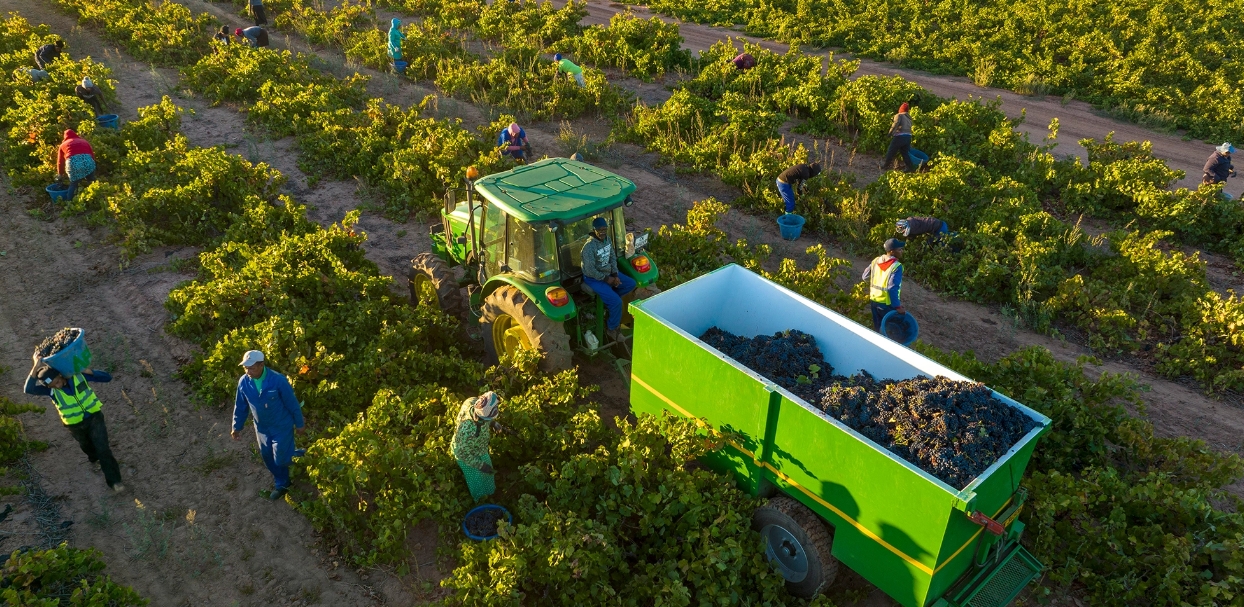In South Africa, new tractor sales, a crucial gauge of the agricultural sector’s financial well-being, have been decelerating after reaching 40-year highs in the previous year. Various factors, including the impact of the El Niño weather pattern and the ongoing power crisis, are affecting sales. However, there is a positive exception as combine harvester sales are thriving, driven by significant harvests in 2023, particularly for larger farmers.
In May, new tractor sales in South Africa experienced a decline of nearly 13% compared to the same month the previous year, with 655 units sold, as reported by the South African Agricultural Machinery Association (Saama). Overall, sales in the year-to-date have decreased by 5.5%, totaling 3,125 units.
In a statement, Saama mentioned:
“Tractor sales, especially for smaller to mid-range units, have experienced a slowdown in recent months. Farmers are exercising caution, considering various factors that are impacting their decision-making.”
“Besides crop yields and quality, commodity prices, and rand exchange rates, El Niño and load shedding are now influencing buying decisions. Forecasts for tractor sales in the 2023 calendar year suggest a decline of approximately 10 to 15% compared to last year,” Saama explained.
South African agriculture has benefited from four consecutive seasons of generally favorable harvests due to a prolonged La Niña weather pattern. La Niña, characterized by the cooling of surface waters in the eastern Pacific, has brought ample rains to the region, contributing to the positive agricultural outcomes.
As a result of the favorable harvests, there has been a surge in new tractor sales as commercial farmers reinvested their profits into their businesses. In 2022, South Africa witnessed 9,181 new tractors sold, marking a 17% increase compared to the previous year and the highest number in 40 years. Similarly, combine harvester sales were also robust, with 373 units sold in 2022, the highest since 1985.
The La Niña weather pattern has concluded, and El Niño has taken its place, typically leading to drought conditions in southern Africa. The 2014-2016 El Niño event had a significant impact on South Africa’s agricultural sector, raising concerns that this one may also be severe. Consequently, farmers are exercising caution in their spending to avoid potential hardships in the future.
The ongoing power crisis is causing concern in the agricultural sector, particularly as rolling blackouts are restricting irrigation activities. Furthermore, the government’s uncertain policies are adding to the challenges. For instance, the National Water Act proposes implementing racial criteria for water-use licenses, creating uncertainties for businesses. Additionally, the weakened rand is driving up the cost of tractors, as they are predominantly imported.
It is noteworthy that combine harvester sales are defying the overall trend. In May, South Africa saw 65 of these machines sold, reflecting a remarkable increase of over 22% compared to the same month in 2022. Additionally, year-to-date combine harvester sales have surged by over 61%, reaching a total of 263 units.
The surge in combine harvester sales is likely a reflection of the strong harvests experienced in the past season, particularly for summer crops like maize. This year, South Africa is anticipated to achieve a record soya crop, and the latest forecast from the government’s Crop Estimates Committee indicates that the country’s maize haul for 2023 is expected to be approximately 16.2 million tonnes, making it the third-largest maize harvest on record.
The significant factor likely contributing to this trend is that large commercial farmers can still afford to invest in combine harvesters, even with price tags reaching up to R15-million and beyond. However, if El Niño emerges with intensity, it may potentially dampen the demand for combine harvesters in the future.


